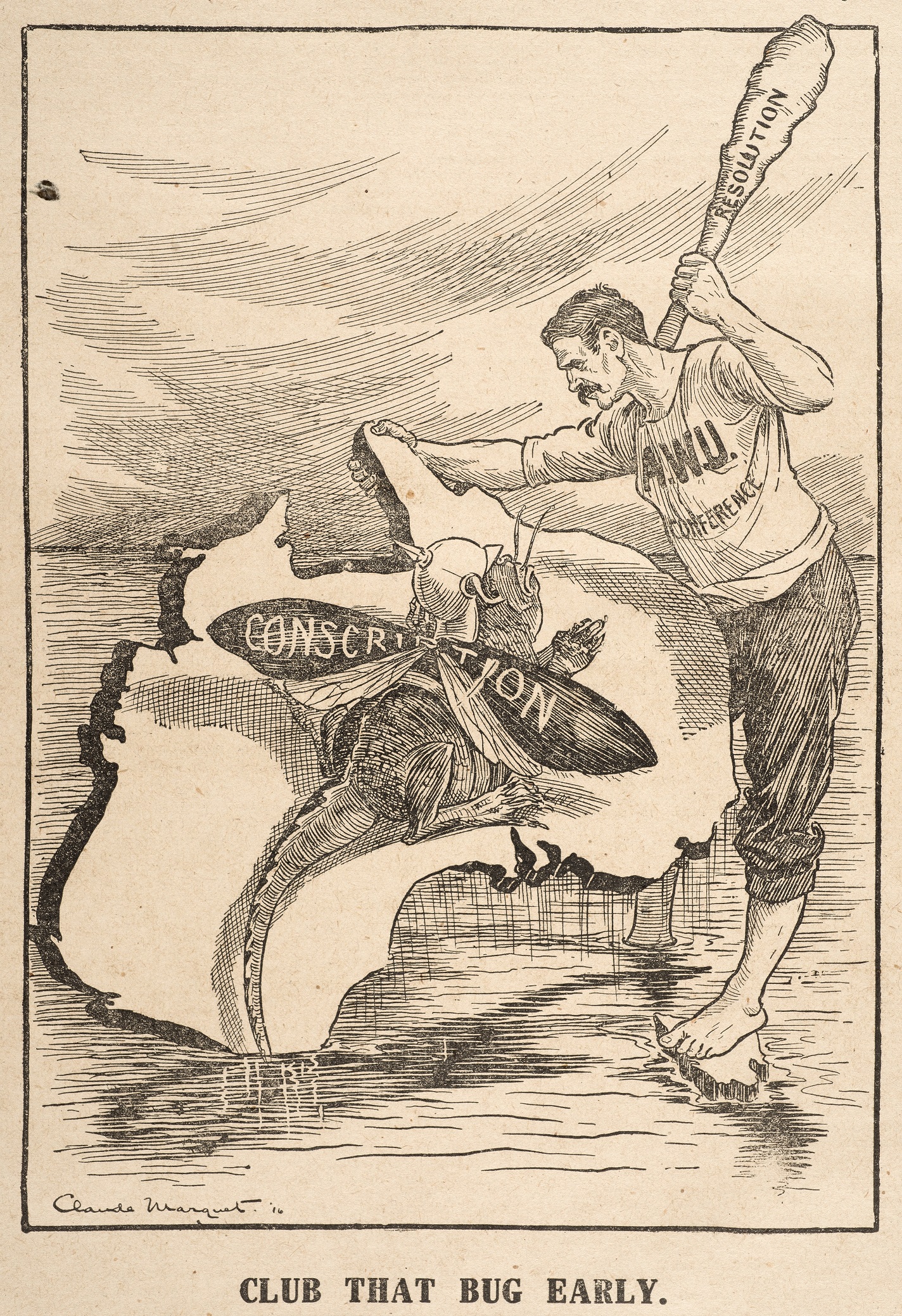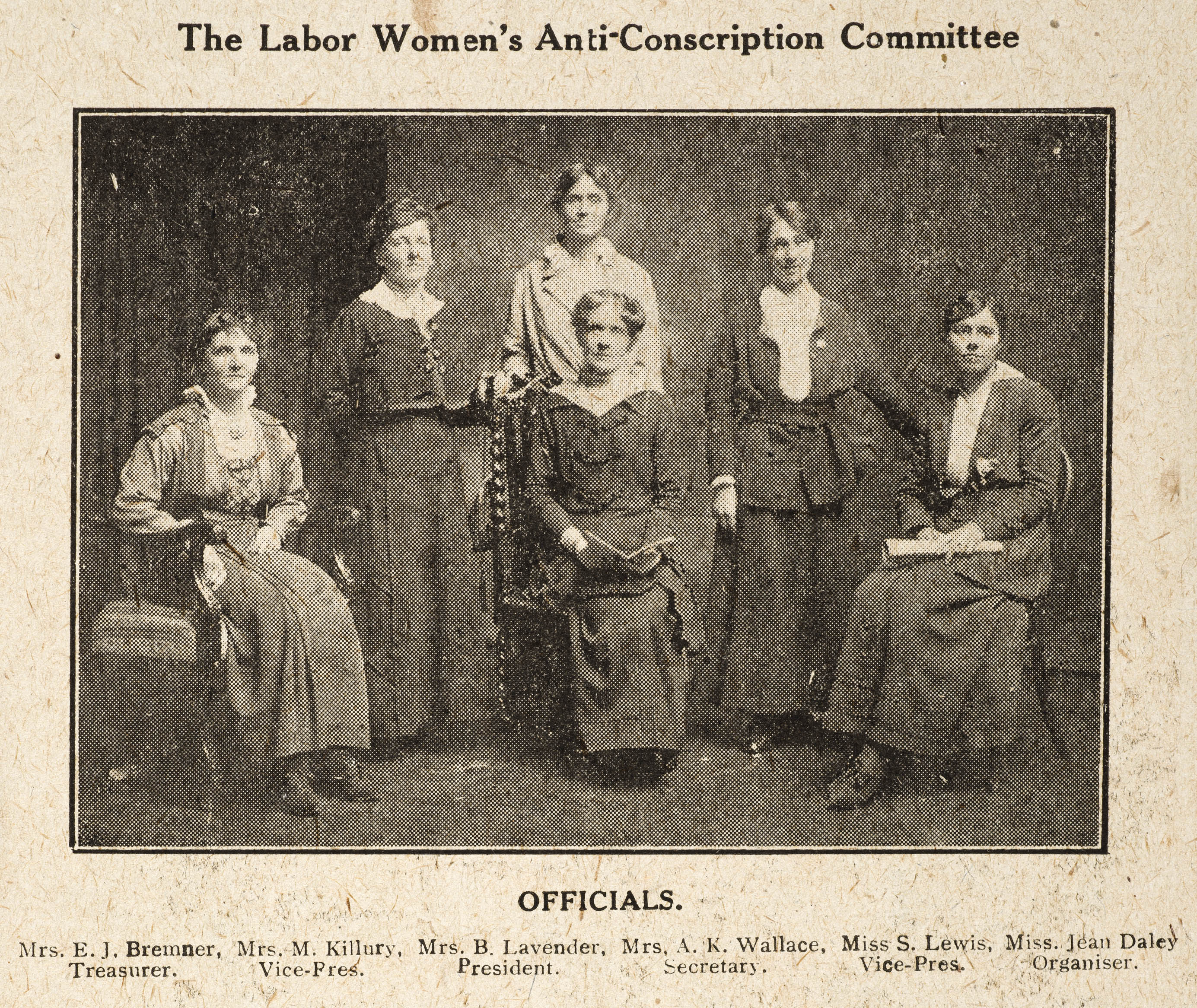Material relating to the conscription referenda of 1916 and 1917.

Australia did not have a program of conscription at the outbreak of World War One. All the Australians who fought in World War I volunteered for service. Two conscription referenda were held, one in 1916 and another in 1917, and in both the ‘No’ campaign was successful.
Many of the trade union collections at UMA hold material about both sides of the campaign. The following are a few key documents relating to the “No” campaign.
Minutes of the Victorian Trades Hall Council, 1914-1921.
The minutes of the 2ndMarch 1916 meeting of the Melbourne Trades Hall Council is one of the most important items in the history of the conscription campaign. On 2 March 1916 Frank Hyett, Secretary of the Victorian Railways Union, member of the Victorian Socialist Party, and John Curtin’s great friend, moved a motion on the THC to convene “a congress representative of all affiliated Unions throughout Australia in order to discuss the question of Conscription…” Over the coming months the THC would place great emphasis on this conference, held in May and known as the All-Australian Trade Union Congress on Conscription, the meeting at which the union opposition to the measure was confirmed, and the structure of the campaign to come was forged. Victorian radicals AD Jones and Jack Cosgrave would immediately seek to turn the movement to even more radical action, unsuccessfully proposing a General Strike.
These minutes can be found online.
Other minutes of interest held at UMA:
- Creswick Branch of the Political Labor Council (7th August 1916)
- Bendigo Trades Hall Council meeting (12 November 1916)

Labor Call and the Australian Worker
Labour newspapers played an important and prominent part in the campaign against conscription. The Labor Call was the newspaper of the Melbourne Trades Hall Council and Victorian Labor, while the Australian Worker was run by the Australian Workers Union. Aware of their power to influence the debate both incurred the wrath of the Wartime Censor during the referendum campaign.
The University of Melbourne Archives holds wartime editions of many labour newspapers, including the Australian Worker, Labor Call, the Timber Worker and others. You can find a series of these newspapers in the University Library Catalogue; adjust the location drop down menu to select “Archives”. Note that these items can only be read in the Cultural Collections Reading Room.

Claude Marquet ‘s cartoon “Club That Bug Early”published in the Australian Worker celebrates the determination of the powerful Australian Workers Union (AWU) to pledge itself to oppose conscription at its federal conference in January 1916. This was a highly influential statement by Australia’s largest trade union that emphasised the foreign “Prussian” nature of conscription, alien to the traditions of the new Federation. Come the referendum on conscription, the AWU would play a prominent role in the campaign.
The gendered appeals of the conscription campaign – often expressed in reference to the famous appeal for women to vote No, “The Blood Vote” – has long been noted by historians of the campaign. But women were active agents of the campaign on both sides. Here, we have pictures of the Labor Women’s Anti-Conscription Committee, including a number of famous women leaders and activists such as Sara Lewis and Jean Daley. These women were tireless activists in the campaign, and had been so since September 1915 when a convention of Victorian Labor women declared their opposition to any implementation of conscription – pre-dating even the AWU’s famous pledge against the measure.